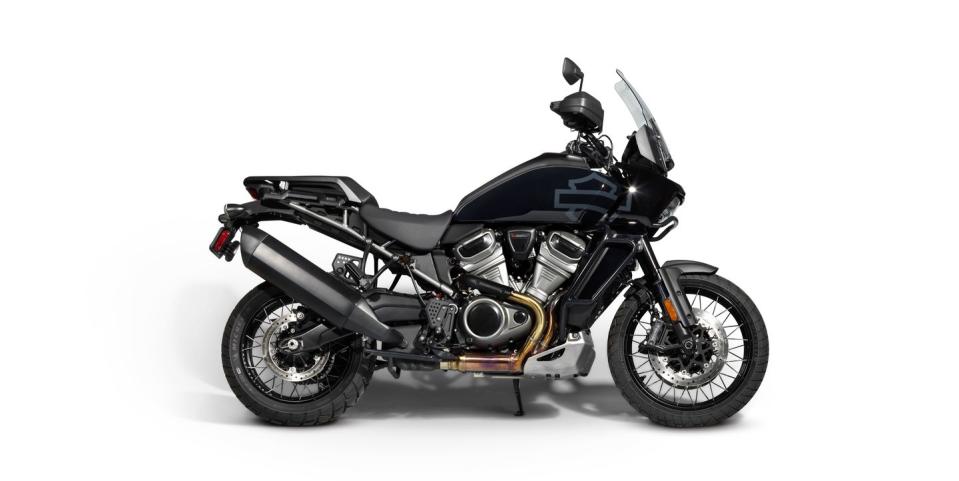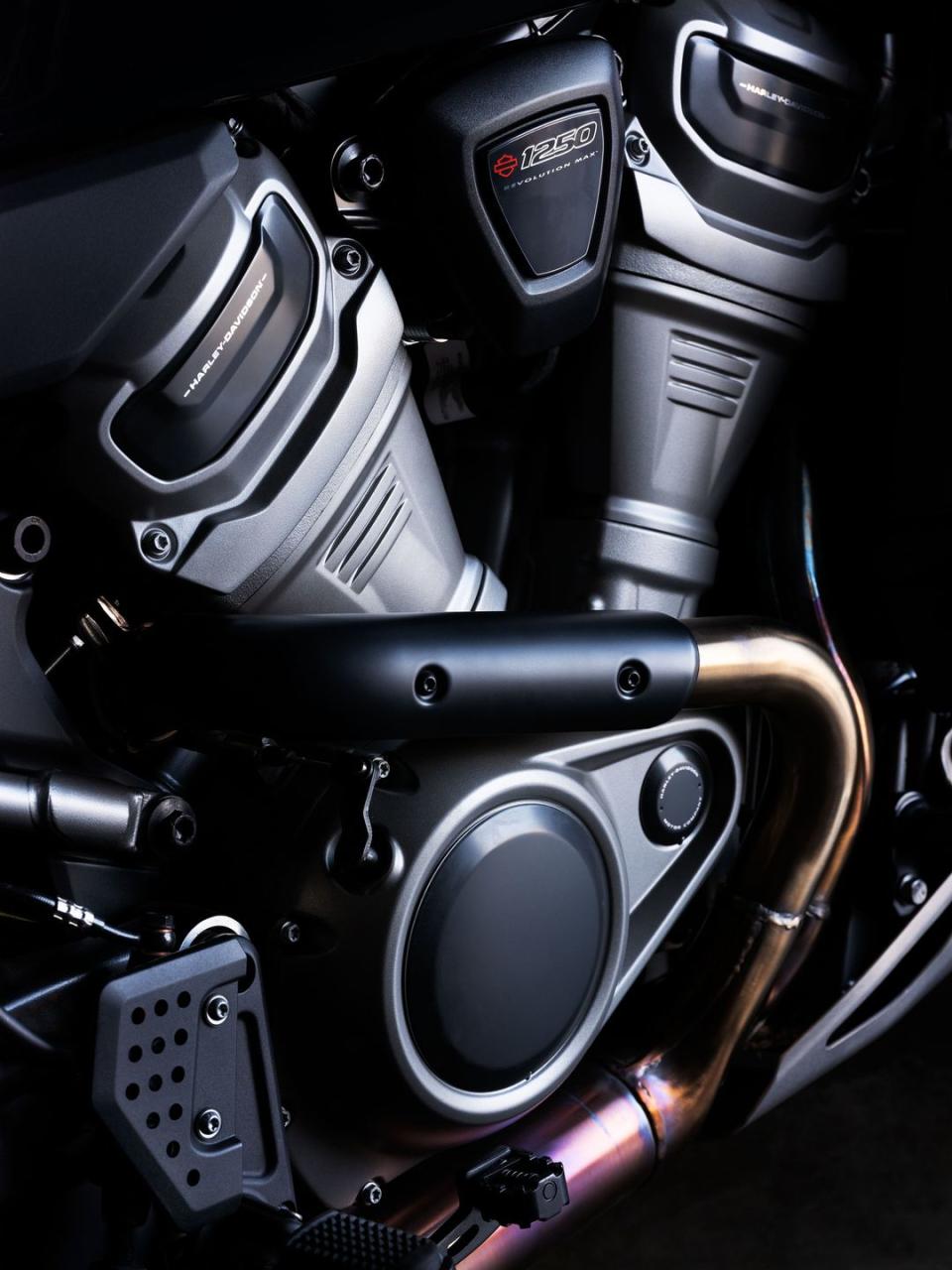Harley’s Latest Bike Was Built to Tackle Unpaved America

Harley-Davidson has been slinging variations on the rumbly iron steed since 1903. And while the company has swerved from pavement-eating, glass-rattling V-twins a few times in the past century, it’s never built anything like this: the Pan America, Harley’s first adventure bike, engineered from the rubber up to go places the open road can’t stretch. It’s as serious as a dust-coated stranger warning you to stay away from their hog.
This story originally appeared in Volume 6 of Road & Track.
SIGN UP FOR THE TRACK CLUB BY R&T FOR MORE EXCLUSIVE STORIES

•Power and Strength: Engineers didn’t just grab a Screamin’ Eagle off the shelf and push till it fit. Harley created a whole new light-as-possible engine. The compact 60-degree V-twin uses variable valve timing to flatten its torque curve. With 150 hp, it’s the most powerful in Harley’s lineup. The 1250-cc mill also functions as a stressed member of the frame, adding rigidity without excess weight.
•The Down Low: A high center of gravity makes for a tippy bike. Harley engineers moved more than 11 pounds of equipment—voltage regulators, evaporative-emissions components, and, crucially, the battery—underneath the chin spoiler, lowering the bike’s center of gravity.
•High Side: The tank may look transplanted from some anime version of H-D’s classic Sportster, but this is no old-school component. Molded using a high-speed blow-forming process that could handle its complex shape, the aluminum vessel weighs eight pounds less than a steel version would, keeping the Pan America light up top.
•Personal Touch: Browse Sturgis and you’ll note the Harley community’s love of customization. The company gets it; the Pan America has five ride modes. Choose Street, Sport, Rain, Off-Road, or Off-Road Plus to tweak attributes like traction control and ride height. Yes, you can disable ABS on the rear brake for skids.
•Light the Way: Though the front end may evoke the iron Cylon nose of a Road Glide, this beak is the new new. There’s a bar above the main headlight that holds six LEDs. They’re aimed 8, 15, and 23 degrees port and starboard. As the bike detects your lean angle, it illuminates the appropriate diodes to light your way through the corner.
•The Stance: Adventure bikes sit tall, to clear obstacles and rough terrain. People can be short. Harley worked with Showa to create shocks that help with this situation. As you roll to a stop, a remote reservoir depressurizes, allowing the shocks to compress up to 2 inches—handy at stoplights. Once you start moving, the shocks fill back up and raise the bike. Bring on the ruts.
•Good Change: Is that a chain drive in place of Harley’s trademark belt? What in the Hells Angels is going on? Rocks can get trapped between a cog and a belt; a chain is a must for off-roading.
•It Knows You’re Going to Speed: A Pan America—loaded with bags, rider, the whole kit—will do 135 mph, but most dual-sport tires will not. Speed was so important to Harley’s brass that they worked with Michelin to design a special tire to handle both pavement pace and some off-roading. It’s called the Scorcher. Right on.
You Might Also Like

 Yahoo Autos
Yahoo Autos 